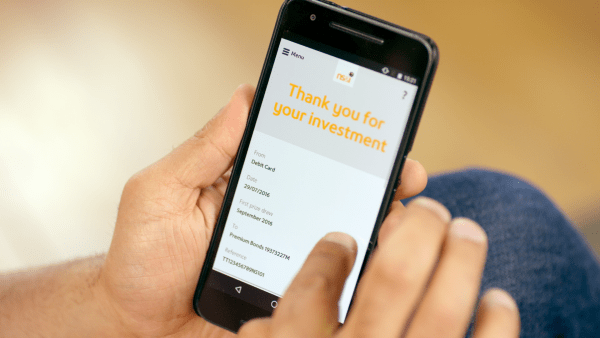NS&I raises rates to the highest level in over 14 years
Customers holding National Savings & Investments (NS&I) Premium Bonds, Direct Saver, Income Bonds and Direct ISA accounts will be delighted to find that the Treasury backed savings provider has increased rates once again, presumably in anticipation of a further base rate rise announcement at the next Bank of England Monetary Policy Committee (MPC) meeting on 2nd February.
Direct Saver and Income Bonds account holders have seen the rate they are earning rise from 2.30% to 2.60% AER while the rate on the Direct ISA has increased from 1.75% to 2.15%. These changes mean that the rate on the Income Bonds account is at its highest since 2008, while the new rate on the Direct Saver has not been greater since its launch in 2010. And the Direct ISA was last paying this much in 2013.
These increases have kept the NS&I easy access accounts competitive, although better rates can still be found. Just this week Shawbrook Bank launched a new issue of its Easy Access Account (Issue 32) paying 2.92% AER on balances of £1,000 and above. And Yorkshire Building Society increased the rate on its Rainy Day Saver Issue 2 earlier this month. The account pays 3.25% on the first £5,000 and 2.85% on any balance above. What this means is that if you hold more than £5,000 in the account, the overall rate you earn will be diluted somewhat.
But for those with large sums of cash, over the Financial Services Compensation Scheme (FSCS) limit of £85,000, NS&I’s latest announcement will be particularly good news. As all funds that are held with NS&I, are guaranteed by HM Treasury, those who have large amounts of cash but do not want to open and manage multiple savings accounts could place their funds in the NS&I accounts and earn a decent rate of interest and keep their money fully protected – earning far more than leaving it to languish with their high street bank. A balance of £500,000 with NS&I could earn £13,000 in gross interest – much better than letting the bank make the most of having your money for nothing.
There is currently an extraordinary amount of £267 billion sitting in current accounts earning nothing at all and we know that some people keep large amounts in their current accounts as they are not sure where to put the cash. In the first instance, they could look to switch it to an account with their bank that is for existing customers. For example, Barclays Bank Rainy Day Saver account is paying 5.12% AER but only on balances of up to £5,000, while Santander customers who hold an Edge Current Account can access the Edge Saver Account paying 4% AER on balances of up to £4,000.
Happy Premium Bond holders?
In December last year, as well as an increase to the easy access accounts, the Premium Bond prize fund rate was increased from 2.20% to 3%. This time around the rate that will apply to the prize fund from the draw in February, is increasing to 3.15%.
Once again, this increase to the prize bond rate means that it’s the highest it’s been for 14 years. However the odds of each £1 Premium Bond winning a prize remains at the same level as it was – 24,000:1 because rather than increasing the overall number of prizes, NS&I has increased the number of prizes worth £50 to £100,000, whilst reducing the number of smaller £25 prizes, as the table below shows;
| Value of prizes in January 2023 | Number of prizes in January 2023 | Value of prizes in February 2023 (estimated) | Number of prizes in February 2023 (estimated) | |
| £1,000,000 | 2 | £1,000,000 | 2 | |
| £100,000 | 53 | £100,000 | 59 | |
| £50,000 | 111 | £50,000 | 117 | |
| £25,000 | 224 | £25,000 | 236 | |
| £10,000 | 559 | £10,000 | 590 | |
| £5,000 | 1,116 | £5,000 | 1,177 | |
| £1,000 | 11,968 | £1,000 | 12,573 | |
| £500 | 35,904 | £500 | 37,719 | |
| £100 | 1,159,432 | £100 | 1,290,509 | |
| £50 | 1,159,432 | £50 | 1,280,509 | |
| £25 | 2,617,902 | £25 | 2,376,161 | |
| TOTAL | TOTAL | TOTAL | TOTAL | |
| £299,202,350 | 4,986,706 | £314,347,875 | 4,989,652 |
Source: NS&I
So, although the odds are the same, perhaps you’ll be one of the lucky ones to win a larger prize from February onwards.
Children enjoy a boost too.
It’s not just adult accounts that have been improved, the rate on the Junior ISA has increased from 2.70% to 3.40% - bringing it back onto our Junior ISA best buy table. However, Coventry Building Society is still topping the table with its Junior Cash ISA (2) which is paying 3.80%.
These rate hikes will be a welcome boost to loyal NS&I customers, especially with the cost of living crisis continuing.
As Ronald Reagan famously said “Inflation is as violent as a mugger, as frightening as an armed robber and as deadly as a hitman” so every extra penny and pound that can be earned is important.
Of course, if you’re worried about rising inflation, there may be other options – not least improving the returns on your cash. Why not get in touch?
We’re currently offering all those with £100,000 or more in savings, investments or pensions a free initial financial planning review worth £500. You can find out more here.
Arrange your free initial consultation
Note: The FCA does not regulate cash flow planning or tax advice. This article is intended for general information and should not be taken as individual financial advice.

